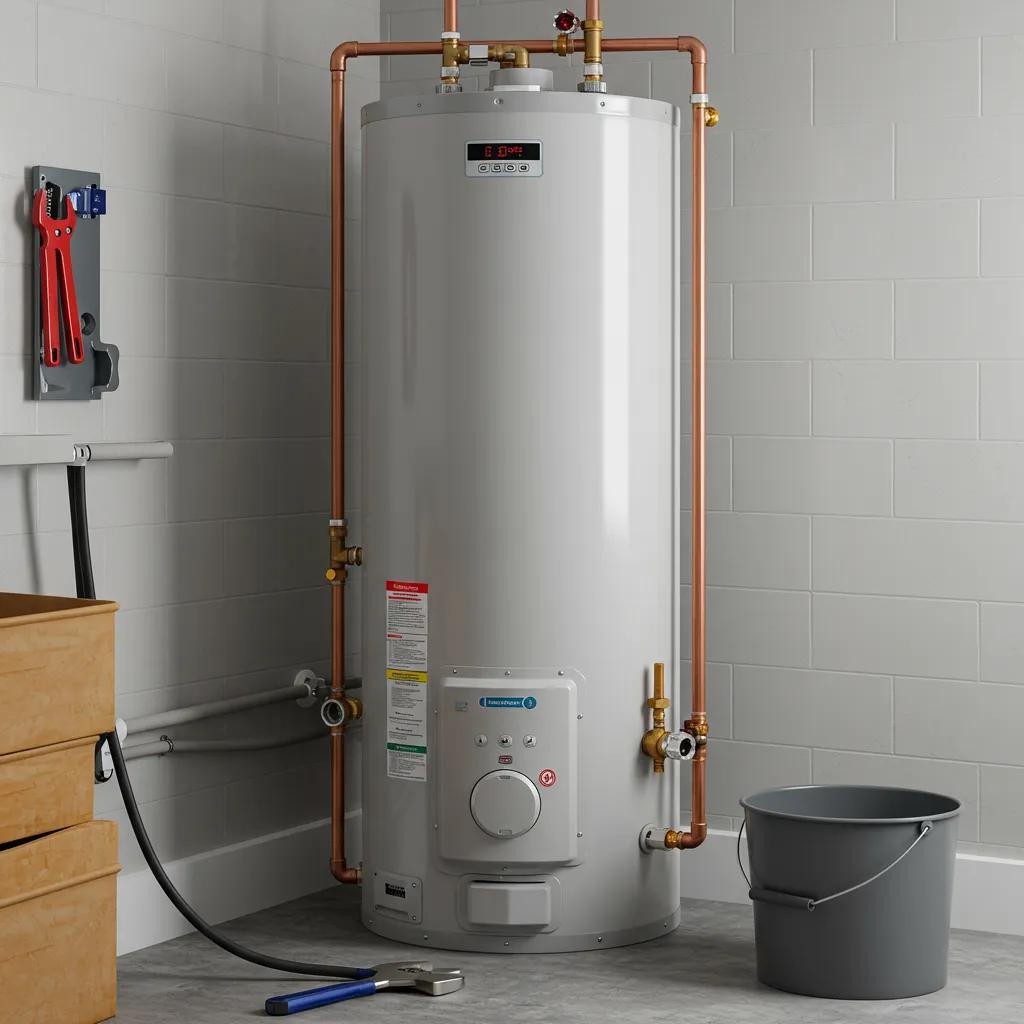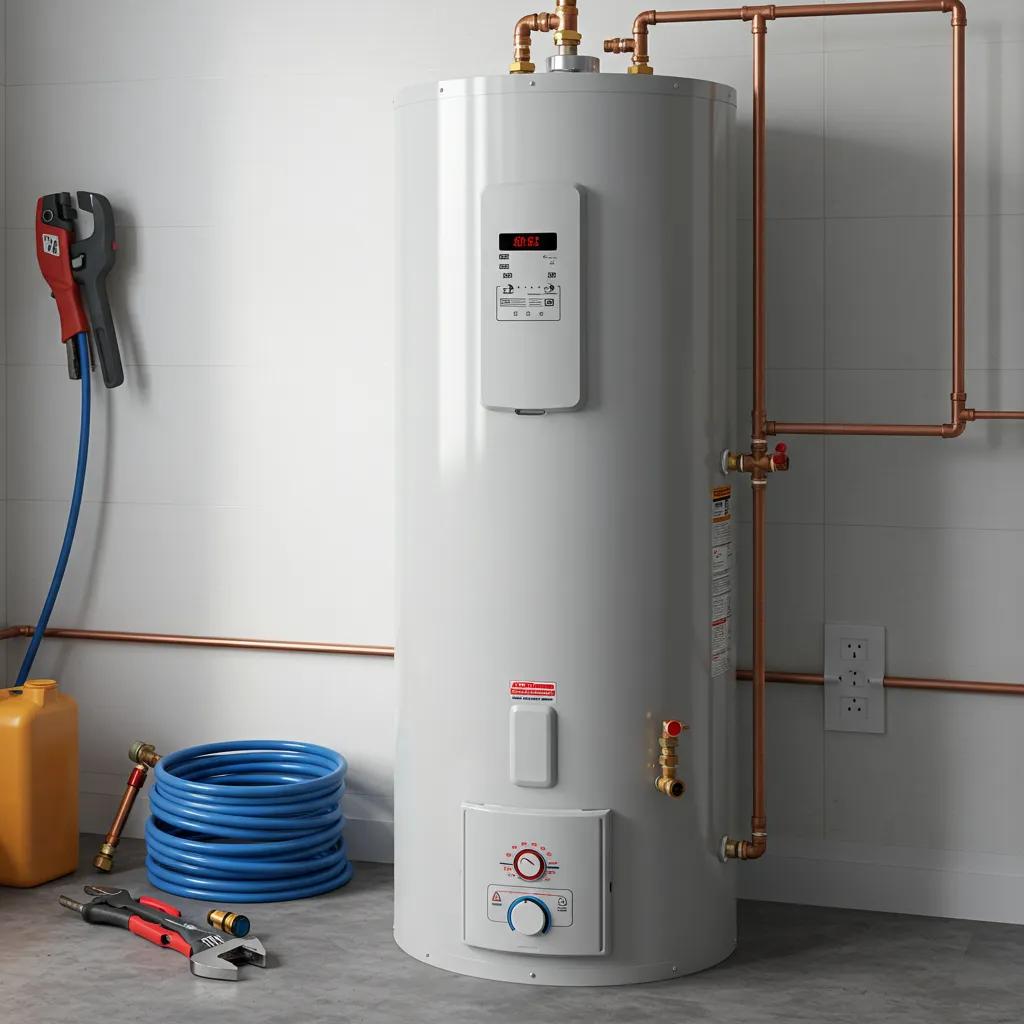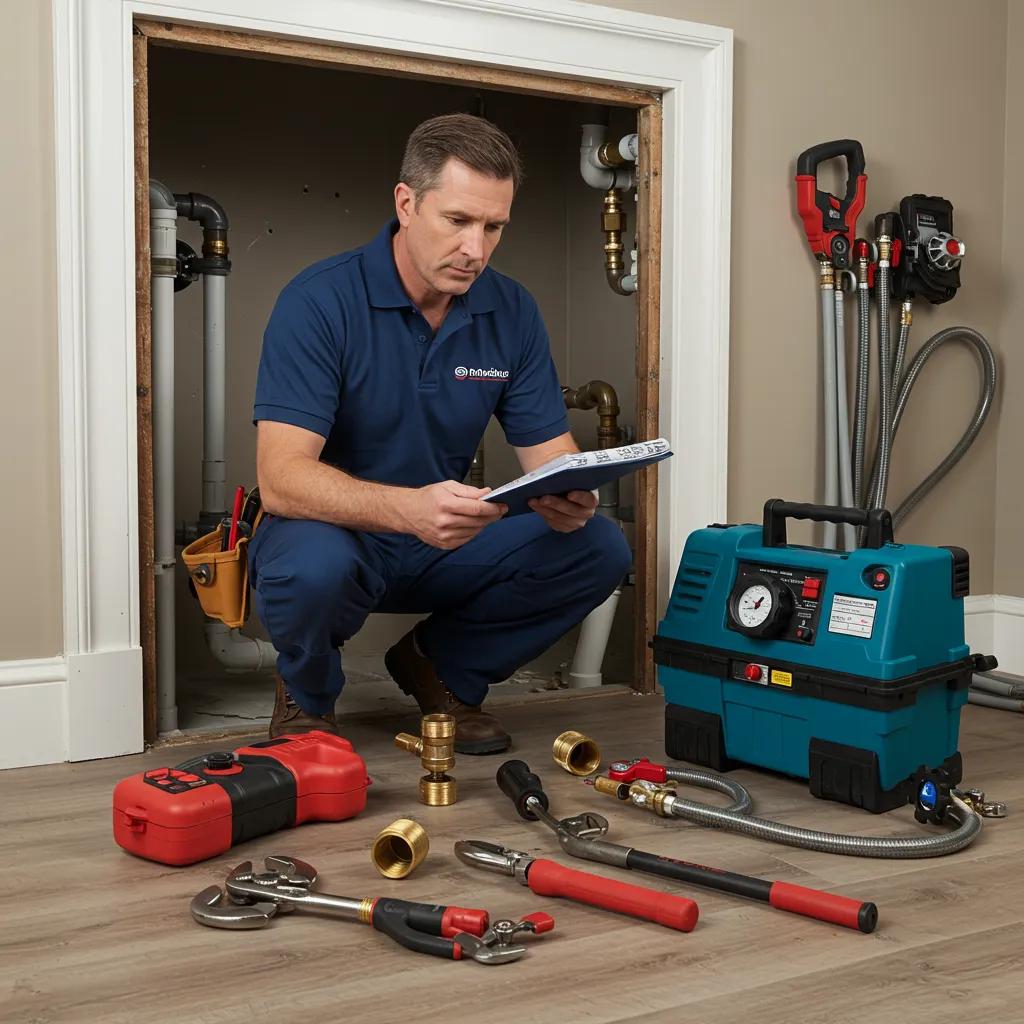Tankless vs. Traditional Water Heaters: Comprehensive Comparison of Pros, Cons, Costs, and Plumbing Impacts for Erie, PA Homeowners and Businesses
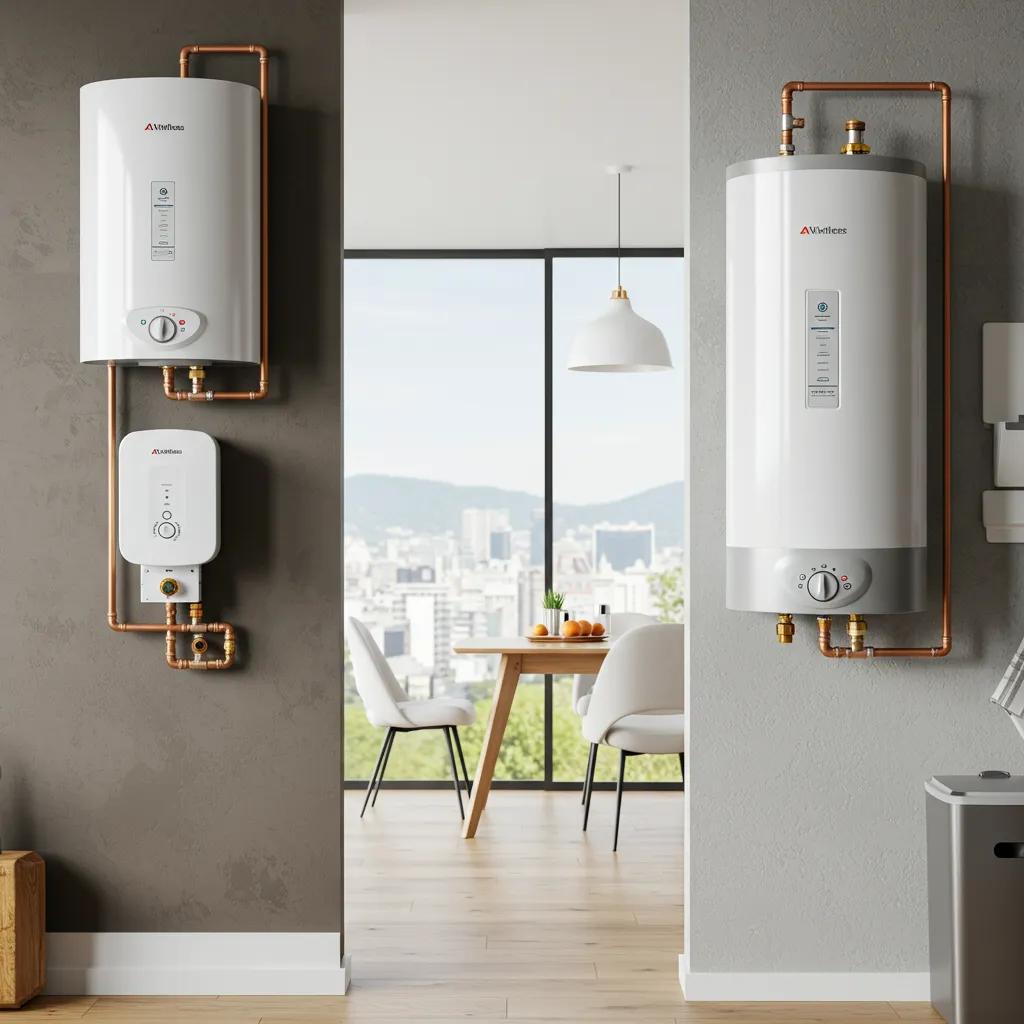
Choosing the right water heater affects comfort, efficiency, and long-term expenses for Erie, PA properties. Homeowners and business owners often ask: what are the main differences between tankless and traditional water heaters for plumbing systems? This guide defines how each type works, compares performance and energy use, examines installation and plumbing requirements, explores lifespan and maintenance needs, and outlines decision factors from household size to environmental impact. You’ll also discover localized cost insights and why C. Carlin Plumbing’s licensed technicians—backed by 150 years of combined experience—are Erie County’s trusted choice for water heater installation, repair, and maintenance. By the end of this article, you’ll have clear, actionable information to request a free estimate and select the ideal system for your home or business.
What Are the Key Differences Between Tankless and Traditional Water Heaters?
Tankless and traditional water heaters differ in storage method, heating mechanism, footprint and energy behavior. A conventional storage tank model holds a predetermined volume of heated water, while an on-demand unit heats water only when flow is detected. These distinctions influence standby losses, space requirements and plumbing upgrades. Understanding basic operations lays the foundation for assessing performance, cost and installation impacts.
How Does a Traditional Storage Tank Water Heater Work?
A traditional storage tank water heater stores and maintains hot water in an insulated steel tank until use.
Key components include:
- Storage Tank that holds 30–80 gallons of water
- Heating Element or Burner that raises water temperature
- Anode Rod that prevents corrosion by sacrificing itself
- Temperature-Pressure Relief Valve for safety
Water enters the bottom of the tank, warms around heating elements or a gas burner, and rises so hot water is delivered at the top outlet. This mechanism ensures a ready supply but introduces standby heat loss when the unit cycles to maintain temperature, affecting utility bills and system efficiency.
How Does a Tankless On-Demand Water Heater Work?
A tankless water heater heats water instantly through a high-capacity heat exchanger whenever flow switches on.
Key components include:
- Flow Sensor that detects water demand
- High-Efficiency Heat Exchanger that transfers heat to moving water
- Modulating Gas Valve or Electric Heating Elements that adjust output
- Exhaust Venting System for gas-fired models
When a tap opens, cold water passes through the exchanger, triggering burners or electric coils to heat the water as it flows out. This eliminates standby heat loss and delivers endless hot water so long as the demand remains within the unit’s flow-rate capacity.
What Are the Main Advantages and Disadvantages of Traditional Water Heaters?
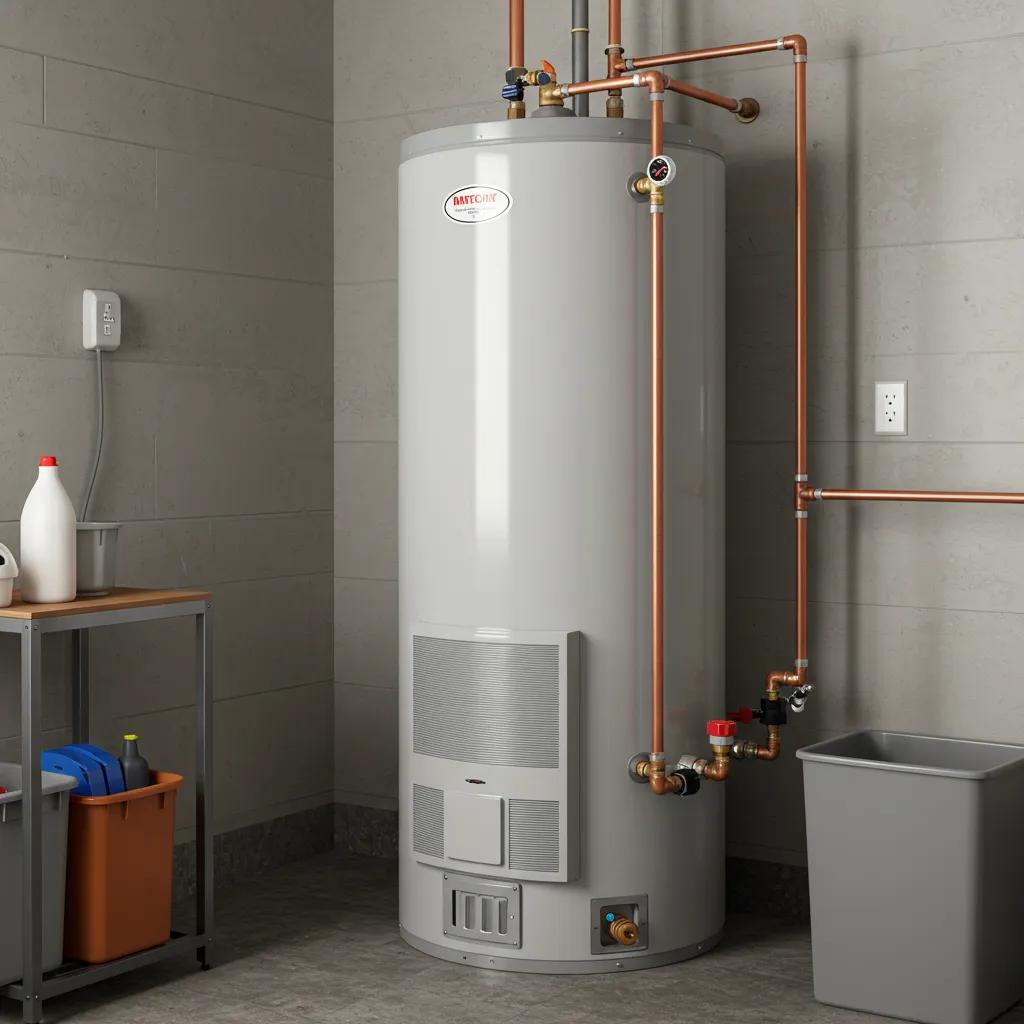
Below is an overview of the practical benefits and limitations inherent to conventional storage tank models.
The following lists outline traditional water heater strengths and drawbacks to help you weigh system suitability for your plumbing layout and usage patterns.
Advantages
- Lower Upfront Cost—Equipment and installation often run $800–$1,500.
- Simple Technology—Familiar design with straightforward repair procedures.
- Consistent Output—Reliable performance regardless of power interruptions (for gas models).
- No Specialized Venting (for electric models)—Minimal chimney or flue requirements.
Disadvantages
- Standby Heat Loss—Wastes energy by reheating stored water.
- Limited Hot Water Supply—Finite volume leads to “cold-water sandwich” effect.
- Larger Footprint—Requires significant floor space in utility areas.
- Shorter Lifespan—Typically 8–12 years before replacement is needed.
Traditional heaters balance cost and simplicity but introduce inefficiencies and space demands that may not suit every property.
What Are the Main Advantages and Disadvantages of Tankless Water Heaters?
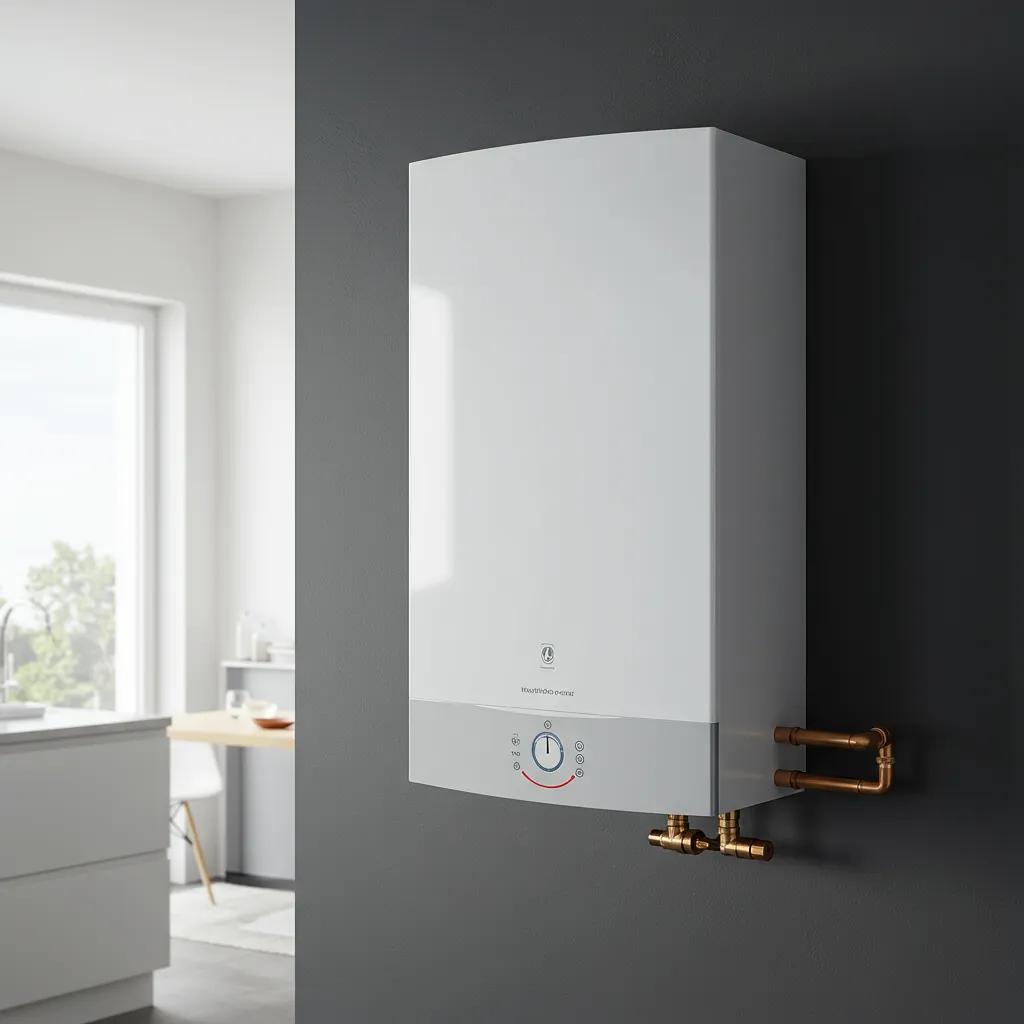
Tankless systems offer on-demand heating and compact design while requiring specific plumbing and electrical or gas infrastructure.
Advantages
- Endless Hot Water—Heats water continuously within flow-rate limits.
- Energy Efficiency—No standby losses can yield 24–34% savings on utility bills.
- Compact Profile—Wall-mounted units free up floor space.
- Longer Lifespan—Often lasts 15–20 years with proper maintenance.
Disadvantages
- Higher Upfront Cost—Installation ranges $1,200–$3,500, including labor.
- Flow-Rate Constraints—Limited GPM output may require multiple units.
- Plumbing and Venting Upgrades—Gas models need specialized venting; electric units may need panel upgrades.
- Power Outage Dependence—No hot water during electrical interruptions.
Tankless heaters excel in efficiency and longevity but involve higher initial investment and system modifications.
How Do Tankless and Traditional Water Heaters Compare in Performance and Hot Water Supply?
Performance hinges on hot water availability under peak demand and recovery capabilities between uses. Comparing flow rates, recovery times and sizing provides clarity for both residential and commercial applications.
What Is the Difference Between Endless Hot Water and Limited Supply?
Tankless heaters supply hot water on demand until flow exceeds capacity; traditional tanks deliver a fixed volume that must recover between draws. Endless delivery prevents showers from running cold, but flow-rate limitations can throttle simultaneous appliances. In contrast, tank models may provide a dozen gallons before depletion, causing gaps until the tank reheats, which can delay back-to-back laundry or multi-fixture use.
How Do Flow Rates and Recovery Times Affect Household and Business Use?
Flow rate capacity (GPM) in tankless units directly correlates to simultaneous hot water fixtures—higher GPM ratings support multiple showers but may falter under heavy load. Recovery rate for storage heaters measures how quickly the tank reheats after depletion. Typical residential tanks recover 20–30 gallons per hour. Commercial tanks may recover faster but still face downtime.

Higher flow rates benefit businesses with continuous demand, but planning must align unit capacity with peak requirements.
How Does Water Heater Size Impact Hot Water Availability?
Sizing a storage tank involves matching gallon capacity to household peak hour demand, typically 30–80 gallons for homes. Businesses like restaurants may require 120+ gallons for constant dishwashing and cleaning. Tankless sizing, measured in GPM at specific temperature rises, must factor in inlet water temperature—colder source water requires higher capacity units. Oversized systems waste energy and budget; undersized units lead to cold-water interruptions under peak loads.
What Are the Energy Efficiency and Cost Differences Between Tankless and Traditional Water Heaters?
Assessing lifetime costs requires examining energy savings, installation expenses and long-term operating budgets for both systems.
How Much Energy Can You Save With a Tankless Water Heater?
Tankless systems eliminate standby heat loss by only heating water when needed. According to Energy.gov, on-demand heaters achieve 24–34% greater efficiency for households using under 41 gallons per day and 8–14% for higher usage. That translates to over $100 in annual utility savings for a typical Erie home. By avoiding reheating stored water, these units reduce gas or electric consumption over their 15–20-year lifespan.
What Are the Upfront Installation and Long-Term Operating Costs?
Comparing initial and operating costs clarifies return on investment over time.

How Do Gas and Electric Models Affect Efficiency and Cost?
Gas tankless heaters deliver higher flow rates (5–10 GPM) and suit larger homes or cold climates; they require venting and gas-line upgrades. Electric models offer near-100% thermal efficiency, compact size and simpler installation but typically lower GPM ratings, making them ideal for point-of-use and smaller dwellings. Electric on-demand units cost less to install but may incur higher electric rates compared to gas units in Erie’s pricing structure.
What Plumbing and Installation Requirements Should Erie Property Owners Know?
Installation impacts vary by unit type, fuel source and existing system configuration. Proper assessment ensures safe, efficient integration.
What Space and Venting Considerations Are Needed for Each Water Heater Type?
Traditional tanks require floor space equivalent to their gallon capacity footprint plus clearances for service access. Vent-free electric units need minimal space, while gas tanks need flue connections. Tankless units mount on walls, saving floor area, but gas-fired models demand dedicated stainless-steel venting and combustion air supply. Vent routes and clearances must meet code to prevent back-drafting and ensure safe exhaust.
How Do Gas Line and Electrical Upgrades Affect Tankless Installation?
Gas tankless heaters often require ½- to ¾-inch gas lines to supply increased BTU demand, and regulator upgrades may be necessary. Electric tankless units draw high amperage—commonly 100–200 amps total—so electrical panel upgrades or dedicated circuits may be required. Plumbing modifications include installing pressure relief valves, isolation valves for maintenance and possibly a condensate drain for high-efficiency gas units.
Why Is a Professional Plumbing Assessment Essential Before Installation?
A comprehensive plumbing assessment evaluates pipe sizing, water pressure and system compatibility with on-demand heating. Licensed technicians detect potential flow restrictions, inadequate venting, or insufficient clearance before installing a tankless unit. Professional evaluation prevents downtime, avoids code violations and ensures optimal performance for your chosen system.
How Do Lifespan, Maintenance, and Water Quality Affect Water Heater Choice?
Long-term value depends on equipment durability, upkeep requirements and local water characteristics.
How Long Do Tankless and Traditional Water Heaters Typically Last?
Tankless water heaters often operate 15–20 years or more with proper maintenance, thanks to corrosion-resistant heat exchangers and no large water reservoirs. Traditional storage tanks average 8–12 years before tank corrosion or component failure necessitates replacement. Extended service life reduces replacement frequency and lowers lifecycle costs for tankless systems.
What Maintenance Tasks Are Required for Each Type?
Regular maintenance preserves efficiency and longevity for both systems.
- Traditional Tanks require annual flushing to remove sediment, inspection and replacement of the anode rod every 3–5 years, and checking pressure-relief valves.
- Tankless Units need periodic descaling—usually every 6–12 months depending on water hardness—and filter cleaning to prevent scale buildup that reduces flow and heat transfer.
Effective maintenance avoids inefficiencies, extends lifespan and prevents premature failures.
How Does Water Quality Impact Water Heater Performance and Durability?
Hard water accelerates scale formation in both tank and on-demand heat exchangers. Sediment buildup in storage tanks increases energy use and stresses burners or elements. Scale in tankless exchangers limits flow and reduces heating capacity. Installing a water softener or routinely descaling prevents limescale damage, promotes consistent hot water delivery and safeguards warranty compliance for high-efficiency units.
What Factors Should Erie Homeowners and Businesses Consider When Choosing a Water Heater?
Selecting the optimal system requires balancing usage patterns, budget, environmental goals and property constraints.
How Do Household Size, Hot Water Demand, and Budget Influence Your Choice?
Large families or commercial operations with continuous hot water needs may favor tankless systems to avoid supply interruptions. Smaller households with modest demand and limited budgets might choose traditional storage tanks for lower initial investment. Factoring in utility rates, installation complexity and system lifespan clarifies the total cost of ownership and guides the decision.
What Are the Environmental Benefits of Tankless Water Heaters?
Tankless units reduce greenhouse gas emissions by cutting energy consumption through on-demand heating. Eliminating standby heat loss conserves fossil fuels or electricity, lowering carbon footprint compared to constant tank maintenance. Compact design also reduces material usage over the product lifecycle, supporting sustainable building practices and energy code incentives.
What Commercial Water Heater Options Are Available for Businesses in Erie, PA?
Businesses such as restaurants, salons and offices can choose condensing commercial tankless systems that deliver high flow rates and recover heat from exhaust gases, or conventional commercial storage tanks sized to peak use requirements. Heat pump water heaters offer an energy-efficient alternative for moderate climates, leveraging ambient air to heat water. Tailored solutions balance capacity, efficiency and installation constraints for each business application.
Why Choose C. Carlin Plumbing for Water Heater Installation, Repair, and Maintenance in Erie, PA?
Local expertise, transparent pricing and comprehensive services make C. Carlin Plumbing the top choice for water heater needs in Erie County.
What Makes C. Carlin Plumbing Erie’s Trusted Water Heater Contractor?
Erie’s go-to plumbing and HVAC contractor since 1994, C. Carlin Plumbing combines licensed technicians with 150 years of combined experience to deliver reliable water heater solutions. Their deep local knowledge ensures fast response times and systems designed for Erie’s climate.
How Does C. Carlin Plumbing Ensure Transparent Estimates and Quality Workmanship?
No surprises or hidden fees—service calls and installations come with clear, upfront pricing. Every project follows industry best practices and local code requirements, backed by solid warranties and a commitment to quality workmanship that builds lifelong customer relationships.
How Can You Request a Free Estimate or Service Consultation?
Contact us for a free estimate on water heater installation, repair or maintenance and discover why Erie homeowners and businesses trust C. Carlin Plumbing for dependable plumbing and HVAC services.
In assessing whether a tankless or traditional water heater suits your property, consider demand, budget, efficiency and space requirements outlined above. With localized expertise and dedicated service, C. Carlin Plumbing stands ready to guide your decision and deliver professional installation, repair and maintenance—ensuring reliable hot water for years to come.

